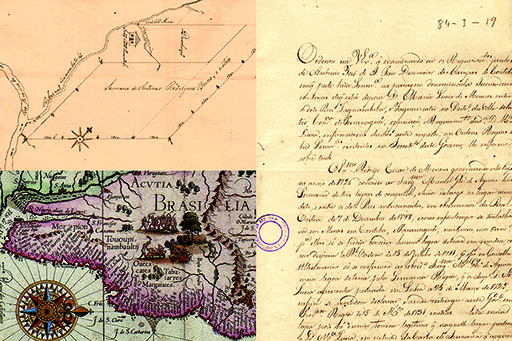
he letter of sesmaria was the main instrument used by the Portuguese State to govern the distribution, occupation and control of colonial lands. These documents were obtained by formal solicitation to a representative of central power (major captain, governor general, chamber officials, district ombudsmen), and the concession was granted only after approval from the Crown. It was enough to include the name of the person soliciting, the place requested, its area, and its boundaries. This was the means of officialy appropriating a parcel of colonial territory, but it was conditioned by the applicant possessing enough resources to carry out effective economic exploitation.
With the granting of sesmarias, the Portuguese Crown intended to guarantee the supply of livestock in the Colony’s mining regions, hence the need to build enclosures in the fields between Rio Grande do Sul and Minas Gerais. In accordance with royal decree, areas not exceeding three square leagues (the equivalent of 13,068 hectares or 32,292 acres), could be occupied and exploited for a period of five years. The grants did not allow fixed residence in the region, and the lands were usually entrusted to administrative agents. In Campos Gerais the sesmarias were three square leagues on the average, and always looked over a river, since cattle raising was intended. While the properties could not at first be sold or transferred without royal authorization, over time the sesmeiros or their descendants were able to buy or sell the lands, according to their own interests.
In Campos Gerais, the first grant was given to the Paulista Pedro Taques de Almeida and his family, in 1704. Other persons from São Paulo, Santos, Curitiba, and Paranaguá also requested and received lands. With Independence in 1822, the concession of sesmarias was suspended.
click on picture
to enlarge